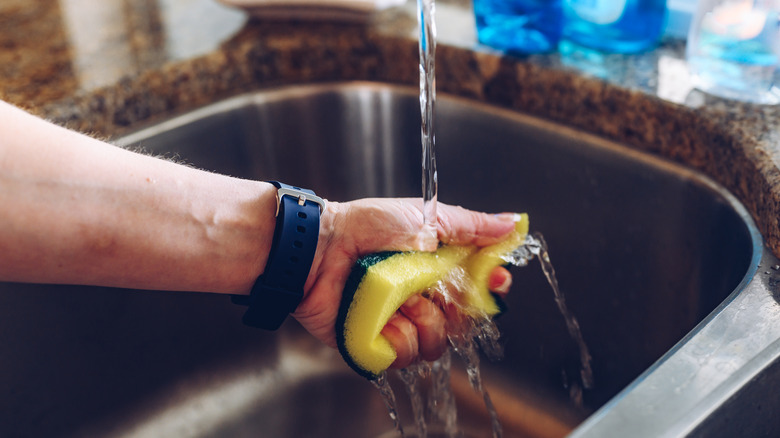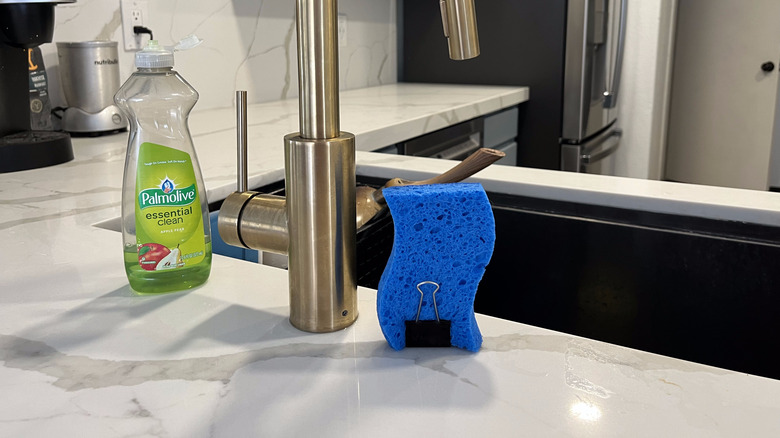Keep Your Sponge Cleaner For Longer With An Item From Your Home Office
Your kitchen sponge is the unsung hero of cleaning supplies. This small but mighty item scrubs, sanitizes, and solves daily messes on the pieces you use the most in your home: your dishes. While kitchen sponges are meant to be thrown out and replaced every week, you might be wondering what kind of germs are lurking on your sponge in between new ones. While microwaving them or placing sponges in the dishwasher can help fight bacteria, there is one super simple hack you can use every day to keep your sponge fresh: place it in a binder clip to help keep it dry!
Wet sponges are a breeding ground for food-based bacteria. When you think about it, your scrubber touches everything from raw meat and fish to saliva, and all the gross things in between. Many people use their sponge to wipe up countertops and sinks as well, adding to the cornucopia of microbes residing on the surfaces of this cleaner. It's important to ring out your scrubber thoroughly after every use and place it away from excess moisture, but using a binder clip as a stand will ensure water doesn't pool in the porous material for extended amounts of time.
Keep binder clips handy in your kitchen
All you need to try this clever home hack is a medium or large binder clip. Make sure it is clean so you aren't adding to the bacteria buildup on your scrubber. Once you finish washing your dishes, rinse your sponge and ring out as much excess water as you can. Press the metal tongs on the binder clip to open it and insert your sponge vertically into the black clasp so it's standing upright. Place the bottom of the clip on a flat surface where it won't get knocked over or disturbed, then leave to dry until the next use. By keeping your sponge where it can get airflow to all areas, you're keeping bacteria from accumulating in the moisture-ridden spaces. When a sponge is left in the sink or lies on its side after a wash, the wet sections provide the perfect environment for salmonella and other bacteria to multiply and thrive.
The clip will also keep bad smells and mildew at bay, thanks to the drying power it provides. If you remember to flip the completely exposed side over after a few hours, this will help with the drying process, allowing both ends to receive airflow. Make sure to wash the binder clip with soap and water and then thoroughly dry it when you replace your existing sponge with a new one in order to ensure old germs don't transfer. Keep a clip handy in your kitchen so you'll always have a fresh, ready-to-use sponge for easier cleaning when you need it!

